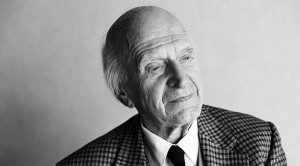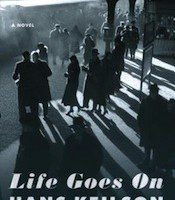In late 1928, the left-wing playwright Friedrich Wolf wrote, “Let’s hope 1929 brings us plenty of struggle, friction, and sparks.”
He got his wish. In 1929, the U.S. stock market crashed. Within weeks, the U.S. cut off the flow of loans to Germany and began demanding repayment on outstanding loans. German banks stopped loaning money and companies began laying off workers. Historians point to 1929 as the year that marked the end of the Weimar Republic. And everyone knows what came after that.
Such is the backdrop for Life Goes On, by Hans Keilson, translated by Damion Searls.In 2010, Farrar, Straus and Giroux published the first English translations of Keilson’s novels Comedy in Minor Key (1947) and reissued the long out-of-print The Death of the Adversary (1959). When Francine Prose called Keilson “a genius,” and these two books, “masterpieces,” it was only a matter of time before the publisher would come out with Keilson’s autobiographical first novel, Life Goes On, written when he was twenty-three.
While the other two novels are set during Nazi-occupied Germany, Life Goes On captures the period right before Hitler. This isn’t about being Jewish or the Nuremberg laws. This is about economics. Keilson depicts Germany’s dire economic climate by focusing on the Seldersens, a Jewish family who have owned a clothing shop in a small town for twenty-four years. From the opening pages, with Herr Seldersen sitting in his shop reading the whole newspaper, on occasion three times in a single day, the tone is set. “That winter was the first one when all the poverty and misery was out in the open. Unemployment was rampant, sometimes affecting both father and son in the same family, and people came by and told stories, complained about all sorts of things, and were all so discouraged. There were no signs of new hope anywhere.”

This, coupled with one’s knowledge of history, creates the looming event that drives the entire narrative—the inevitable heart-rending bankruptcy, which brings with it the death of an era and a way of life. The question is: when will it happen? And will Herr Seldersen, who takes the financial ruin personally, end his life before he ends his business?
With money tight and so many people unemployed, Herr Seldersen allows his customers to buy items on credit. Here begins the deathly economic web. If his customers don’t pay cash, Seldersen doesn’t have enough money to pay suppliers. And suppliers need money to buy the goods somewhere. So the slowdown keeps going. As Herr Seldersen says, “Whoever has the strongest lungs wins—whoever can hold out the longest. Usually that’s the one who has capital behind him.” Seldersen borrows money and stock from competitors. As the debts pile up, so does the tension—how much longer can this go on? “Father looked rather lost, like a small child sitting on a chair for the first time, his legs dangling in the air, arms stretched out pressing against the tabletop, as though feeling the aftershocks of a great strain inside him.”
The Seldersens have a son, Albrecht, who at the opening of the book is sixteen and still in school. He is a good student, loves to read, and enjoys, above all, the life of the mind. Albrecht’s good friend, Fritz, leaves school to get a job, but the company goes bankrupt. He goes to America but can’t get a work visa. He returns to Germany and ultimately can’t find work and kills himself. Albrecht moves to Berlin to continue his studies and begins to play his violin at events to earn money. It is in Berlin that we get a sense of the violent, tumultuous politics. Mass protests rise up out of nowhere. “It was as if everyone had gone crazy… they were standing on the corners, howling and screaming, and every time a police car drove by, with teams of policemen on the running boards, clinging like burrs to the car—holding on with one arm, ready to jump down at once when the order came—the screams only got louder, echoing from one side of the street to the other.”
By the end of the novel, the hopelessness and despair are epidemic. The country and its people, from all socioeconomic classes, seem to be dying. Keilson has depicted the perfect setting for someone, even a demagogic dictator, to come along and offer the German people hope.




